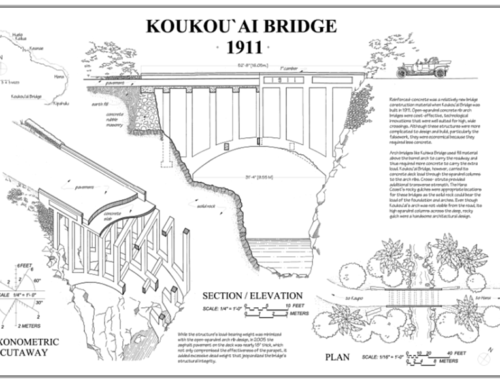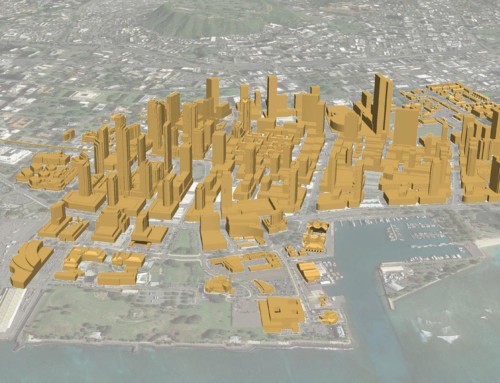By Kiersten Faulkner, Executive Director, Historic Hawai‘i Foundation
Like other professional fields, historic preservation uses both plain language and also terms-of-art that have specific meanings within the discipline. Some of the shorthand or jargon may seem familiar, but have nuances or implications that are important to describe a project or framework accurately. This helps ensure a consistent and credible approach based on professional standards and a common frame of reference.
Some of the most common terms include:
- Eligible or Eligibility: a formal determination that is made by a qualified preservation professional about whether or not a property qualifies for designation on the National Register of Historic Places. It is the most frequently used standard to differentiate whether a property is “historic” or merely old.
- Significance: the intrinsic qualities that describe the historic importance or value of a property. Significance is commonly referred to by the relevant section of the eligibility criteria for the National Register, which are:
- Historical events;
- Historical persons;
- Design patterns or construction;
- Data or information potential.
- Integrity: elements of a historic property that convey any or some of its significance. Integrity is not necessarily related to condition of the property, but assesses whether or not a “preservable” entity still exists that would be recognizable by the group that used the property historically. The elements of integrity are location, setting, design, materials, workmanship, association and feeling.
- Period of Significance: the timeframe during which the historic property acquired the qualities that make it historically significant. The period of significance is described with both beginning and ending dates. Decisions about treatment type and proposed alterations are based on the appropriate design or construction method related to the period.Character-Defining Features: the physical characteristics of the property that contribute to or display its historic significance. These usually include descriptions of the location, setting, type, style, method of construction, materials, design, form, mass, workmanship and artistic elements. Any future changes are judged against the features to determine whether they would be appropriate alterations.
- Treatment Type: there are four general ways of caring for historic properties. The appropriate treatment type depends on the individual case, including the relative importance or rarity of the resource, the value it holds to the community, its physical condition, and the needs of current users. The four approaches for treatment are Preservation, Rehabilitation, Restoration, and Reconstruction.
- Preservation is sustaining the existing form, integrity, and materials of an historic property with limited and sensitive upgrading of mechanical, electrical, and plumbing systems and other code-required work;
- Rehabilitation is the act or process of making possible a compatible use for a property through repair, alterations, and additions while preserving those portions or features which convey its historical, cultural, or architectural values;
- Restoration is the act or process of accurately depicting the form, features, and character of a property as it appeared at a particular period of time; and
- Reconstruction is the act or process of depicting, by means of new construction, the form, features, and detailing of a non-surviving site, landscape, building, structure, or object for the purpose of replicating its appearance at a specific period of time and in its historic location.
- Effect: The impact of a project on a historic property is called an effect. Effects include direct as well as indirect and cumulative outcomes. Effects can be beneficial—such as restoring lost features or providing needed maintenance—or adverse. Adverse effects include such items as partial or total destruction or inappropriate alterations of the property, or detrimental alteration of the surrounding environmental, such as visual, spatial, noise or atmospheric impingement. Effect is judged against the qualities of both significance and integrity to determine if the impact would lessen the property’s eligibility for the National Register of Historic Places.
Historic Hawai‘i Foundation relies on these standard definitions and professional terms in its advocacy and technical assistance programs. HHF uses these concepts when determining what action would be appropriate for the organization to take; to determine the appropriate level or degree of involvement that is warranted; and to frame the guidelines and principles for HHF comments and recommendations.








